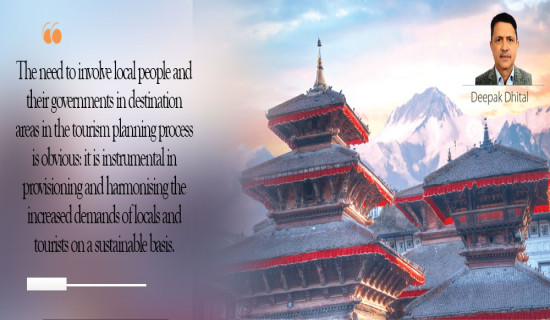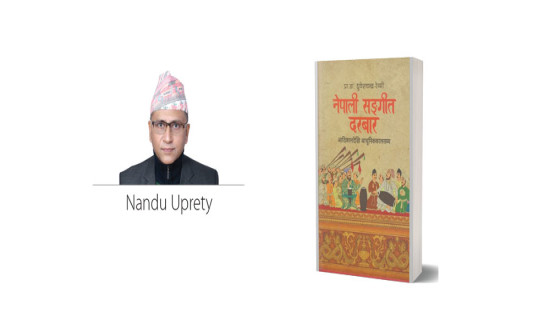- Saturday, 27 April 2024
Connecting The Circuit Of Religious Tourism
Nepal and India are two close neighbours and enjoy multidimensional relations in social, cultural, economic and political spheres. This tie is not limited at the government and political level but also remains firm at the people’s level. In this multifaceted relation, the cultural relations are predominant, with common religious beliefs and values. Hinduism and Buddhism are two major religions that connect people of the two countries closely. Their religious ties are reflected in the form of a large number of people from both countries visiting each other’s countries for pilgrimage. Such mutual exchanges of pilgrimage do not only strengthen the cultural ties but also support economic wellbeing of the people of both the countries through tourism.
At a time when tourism is emerging as one of the major industries in the global arena, the government of Nepal has also given due importance to this sector. While analysing on the basis of available factors, tourism is one of the major sectors of Nepal having high comparative advantages with respect to global competition. If the country can reap the benefits of its unique tourism resources including, natural beauty, lofty Himalayas, diverse culture, bio-diversity, climatic diversity and sacred places for world’s Hindu and Buddhist population, tourism could be an engine of economic growth and development. If we could take benefits of the cultural ties with India, there is immense potential of enhancing the country’s economy through tourism development. By attracting more cultural and religious tourists from India, Nepal can generate more revenue, create more jobs, expand trade and develop infrastructures. In addition to this, joint efforts to attract foreign tourists through transnational cultural and religious tourism promotion could contribute to the economic growth of both countries.
As sacred places related to Hinduism and Buddhism are located in both countries, with historical connections, their combined efforts can make a significant leap in promoting religious tourism. To this effect, Lumbini visit of Indian Prime Minister Narendra Modi on Monday to celebrate the 2566th Buddha Jayanti has been a milestone. Addressing a function, in Lumbini, the birth place of Lord Buddha, Prime Minister Sher Bahadur Deuba and his Indian counterpart Modi have announced to make joint efforts for the promotion of transnational Buddhist Circuit to attract more tourists in the region. Prime Minister Deuba has said that the Buddhist Circuit, connecting the notable places associated with Buddha’s life, namely Lumbini, Bodhgaya, Sarnath and Kushinagar, would boost cultural tourism in both the countries. Indian PM Modi said that he was eager to develop the Buddhist circuit to expand international relations among Buddhists and contribute to the world peace.
Modi said that Nepal and India should work together for the welfare of humanity with Buddha’s spirit. He shared that he had a different spiritual experience when he visited Nepal and its sacred places such as Pashupatinath, Muktinath, Janakpur and Lumbini. As India is making efforts to attract more Buddhist and Hindu visitors through the concept of Buddhist Circuit and Ramayan Circuit, Nepal should also join hands in the effort to attract more religious tourists from India and abroad. For this, development of sufficient tourism infrastructures and environmental protection is essential. As per our experience, having larger number of visitors alone is not beneficial to the country’s economy. We should also focus on extending the stay of tourists.
















